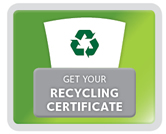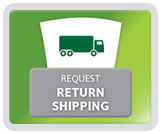Lamp Regulations
All fluorescent lamps contain mercury. When they are discarded, federal and state regulators assume that lamps are a hazardous waste. In most circumstances, waste lamp generators must manage, transport and dispose of lamps as a hazardous waste or comply with the more lenient Universal Waste Rule (UWR). The UWR provides streamlined regulations for the management and transportation of lamps.
Exemptions
The federal government and nearly all states strongly encourage the voluntary recycling of all fluorescent lamps. However, under the federal rules, management and disposal of lamps under certain conditions is not regulated. Lamps are not regulated by the federal government if:
- The lamps pass the test that determines whether a waste is a hazardous waste (the test, called the TCLP, determines the leach-ability of mercury in the lamp).
- A household generates the lamps.
- A Very Small Quantity Generator (VSQG), which is a generator of less than 220 pounds of hazardous waste per month and who accumulates less than 2,200 pounds at any one time, generates the lamps.
These exemptions are not as broad as they appear. Lamps are assumed to be hazardous so generators disposing of "non-hazardous" lamps are required to either test their lamps or maintain current information on the lamps disposed of to prove that the lamps were properly characterized as non-hazardous. This means that every different model number of lamp used must be individually documented.
In addition, any exemption from recycling or hazardous disposal requirements does not relieve a generator from liability that might arise from those lamps. Generators are still liable for their lamps, including possible superfund liability.
Finally, many solid waste and industrial waste landfills cannot accept hazardous wastes, even if they are generated by a VSQG.
State Stringency
State regulations cannot be less stringent but can be more stringent than Federal regulations. Many states have lamp disposal regulations that are more stringent than federal requirements.
In some states, all mercury-added lamps are hazardous and must be recycled or disposed as a hazardous waste. Other states eliminate any VSQG exemption or limit it to much smaller quantities of lamps. And certain states allow the VSQG exemption from hazardous waste rules but still require recycling or hazardous waste disposal by prohibiting disposal of hazardous waste lamps in some or all of the municipal and industrial waste landfills in their state.
Compliance
In all states, generators can easily comply with state and federal rules by complying with the streamlined Universal Waste Rule requirements and sending their lamps for recycling. In virtually all cases, it is far simpler to recycle fluorescent lamps than to
- Maintain complete records of their lamp models and accompanying TCLP test results,
- Closely review their state laws and rules regarding lamp management and disposal, and
- Review disposal restrictions imposed by their local landfill.
United States Environmental Protection Agency Sites
|


